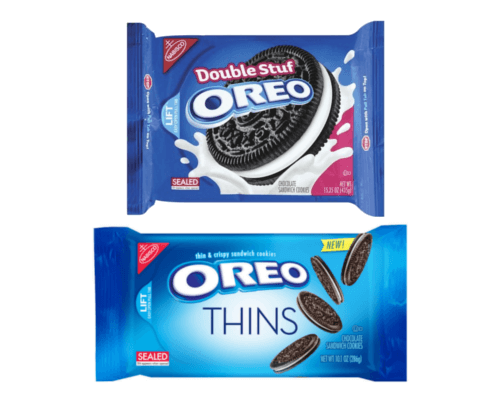
You might see repeatability, also called reproducibility, being lauded as one of the benefits of a weighing scale. Important aspect or marketing speak? We take a look at what repeatability means, and why it’s so important for many applications.
So what is reapeatability?
Repeatability in weighing scales and balances is defined as: “The ability to display the same value when a weight is placed on a scale more than one time. Often expressed as a standard deviation of 5 to 10 tests”. So if you put a 50g weight on a scale 10 times, the scale should show it weighs 50g every time. You can see why poor repeatability would be a problem in every industry from cooking to chemistry.
Scales and balances are sensitive instruments, and a weighing instrument must be monitored accordingly to ensure repeatability. For example, laboratory balances such as analytical balances might adjust their internal calibration if a change in temperature is detected. We will present the factors for testing repeatability designated by NIST, The National Institute of Standards and Technology.
What factors or practices will help ensure repeatable weighing results?
The first factor is using the same supplies and tools for all measurements. Use the same beaker, tools and anything else you might measure with. Even if you are weighing the same element, anything from a small error to a contamination of the sample means you wouldn’t be able to correctly assess repeatability if you are not measuring the same exact thing every time. Look at baking, for example: a cup of flour might be as little as 4 ounces and as much as 6 because it can absorb moisture. That seems small, but it can make a huge difference in a precise recipe. Now imagine that same mistake in a large bakery. It adds up! Do not change the weight sets or switch to another standard when determining repeatability, even if they are supposed to be the same weight. Other factors could come into play and muddle the results.

The second factor is the observer: to minimise potential mistakes, the same person should observe the measurements to determine whether or not they are identical. This is also because the observer will do things a certain way, and even if the tests call for a precise sequence of events, another observer might do something slightly different that could affect the results.
The third factor is to ensure the same instrument is used under the same conditions, when taking every weight reading. If you use different weighing scales or balances, even if they are the same make and model, to weigh the same sample, their repeatability cannot be assessed accurately. Once repeatability of a scale or balance has been determined, it applies to only that instrument. And measuring a product in different conditions, such as inside or outside and with various temperatures, whether it’s water evaporating or dust interfering with the correct measurements, can affect changes to both the scale and the element being measured. Turning the AC on or moving the scale can impact the results. Precision scales and balances are very sensitive to changes, and the elements being measured can also be impacted.
The fourth condition follows the third one: one must have the same location when testing a balances repeatability, for the reasons stated above.
The fifth condition is that the tests must be administered throughout a short period of time. This helps ensure the conditions do not change too much between tests, and also to check that the balance is able to produce repeatable results back to back during constant use.
Lastly, the objective must be the same.
Why is repeatability important?
While it is most often mentioned in science, repeatability is paramount no matter which industry you’re in. Imagine a catering company making food for a wedding using a food weighing scale to measure the same ingredient, and getting a different result each time. Some of the guests could have great food while the others might be served a batch of food with too much salt in the sauce. When you go to a bakery, you want to make sure their famous lemon cake you’re buying will taste the same as last time. Can you imagine if Oreos or Coke had a slightly off recipe every time? You would never be quite sure what you would be getting. In science, being able to repeat experiments is one of the cornerstones of validity.

Imagine not knowing which of these you get every time you open a normal bag
And of course, recording measurements accurately the first time means not having to go back and do all the work all over again. Imagine a factory line where checkweighing scales do not have highly repeatable measurements. Bags of chips or sweets are too light or heavy, your granola bars taste completely different depending on the batch, or you end up spending too much on shipping because you thought all your parcels weighed the same when they didn’t.
Small mistakes get multiplied or can affect very expensive goods such as saffron. This is particularly important for scales used in many consecutive weighing: a scale with poor repeatability would be unable to maintain the proper value throughout the weighing, and the resulting data would become inaccurate.
Some of you might say “isn’t that why you calibrate the scale?” While calibration should be frequent as it is an important part of scale and balance maintenance, no one wants to interrupt their work flow to calibrate the balance multiple times a day, particularly if the model only comes with external calibration. So having a scale with good repeatability right from the start is a must.
How do I know the degree to which a scale has repeatable results?
Testing it is one way to know, but of course, you want to know if a scale or balance is repeatable before buying it. There are many ways to ensure the scale or balance you are using will deliver repeatable results.
Before purchasing a scale or balance, review the conditions it will be used in; make sure the products you choose can account for them. Then compare those conditions to the specifications for the balance or scale. Check the temperature range the scale or balance is meant to work in. Do you need something solid or waterproof?
It might be worth investing in accessories such as draft shields, anti-vibration tables or dust covers if you know these are factors your scale will have to contend with. A stability indicator is one of many features that account for outside conditions and allow you to know when to start measurements at a glance. Some balances are built from fewer components to ensure greater stability while others have software that accounts for changes in temperature and humidity. Look for key features like stable housing, level indicator, shock protection, temperature range and resistance to water or dust.
If you want to test the scale or balance, using calibration weights or the elements you will be weighing the most frequently are both viable assessments. Calibrate your scale. Make at least 5 identical tests, ideally 10 or more in a short period of time. If the balance shows consistent results, they are repeatable. If not, you might need to calibrate the scale, make adjustments or have it checked by a technician.

